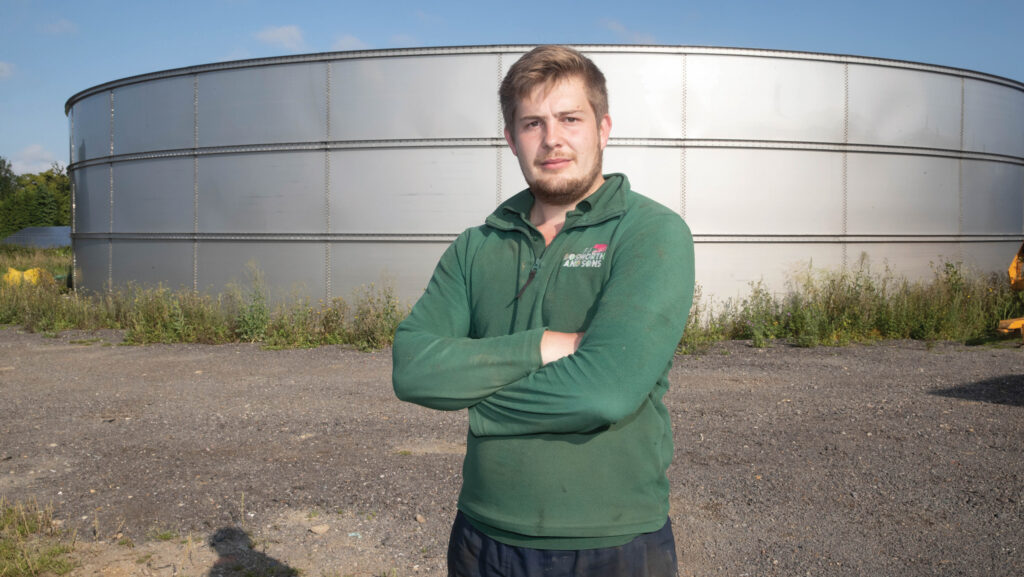Farmer Focus: Manure applications boost wheat yields 0.7t/ha
 Jack Bosworth © Tim Scrivener
Jack Bosworth © Tim Scrivener I hope everyone is well.
We have been pushing on with harvest since my last piece, so it’s going to be an all-arable update on this occasion.
Firstly, a massive thanks to those involved for the hours put in so far, as we’ve certainly done a few!
See also: How to store, analyse and spread organic manure for best value
Harvest started for us on 14 July with winter barley coming in at 9.3 t/ha, which is a tonne down on last year.
That land is now waiting for volunteers to be killed off before applying slurry and drilling oilseed rape (OSR).
Some of it is also going to have a companion crop of buckwheat this year as a trial to see if it helps aid establishment, with our biggest challenges coming from cabbage stem flea beetle and pigeons.
Winter OSR was next to be harvested, yielding 3.7 t/ha. This land has been cultivated to get next year’s seedbed under way at the earliest opportunity.
We have been going at some winter wheats, which I must admit have been mixed.
The real disappointment so far has been wheat after spring barley, averaging 8.9 t/ha.
Interestingly, one area, where we trialled a cover crop before spring barley, was the poorest yielding area of spring barley last year, but the best yielding area of wheat following spring barley this year.
In addition to this, the area that had two organic manure applications was at least 0.7 t/ha better off than the area that had one, albeit they all were given the same amount of nitrogen, just in different forms.
What I was pleasantly surprised with on the wheats was the continuous area we are trialling on the farm. It is a small block of 12ha (30 acres) across five fields and its seventh wheat in a row yielded an average of 8.43 t/ha.
We have just over 100ha (247 acres) to go, which is split pretty much 50/50 second wheats and spring barley.
The wheat includes some late drilled that isn’t yet fit, so I imagine we may have to sit patiently for a few days. There’s plenty of other arable work going on with bales to cart, cultivations and contract spreading.
Elsewhere, we have our vet visiting us shortly. I will spend the day with him looking around both pig units and going through our latest performance data.

